Take a peek behind the scenes of some of Glen Eira’s long-running businesses. Get to know the owners and their stories and learn how Glen Eira’s streetscapes have changed over time in our digital exhibition Talking Shops: Glen Eira Stories.
Lizzy’s Chocolate Creations
est. 1983
Address: 172 Koornang Road, Carnegie
From an interview with Ingrid Nichols in 2021 by by Aron Lewin and Tatiana CC Scott from Tales of Brick and Mortar. Interview edited by Aron Lewin. All Photographs © Tatiana CC Scott. Developed for Glen Eira City Council for the Talking Shops project.

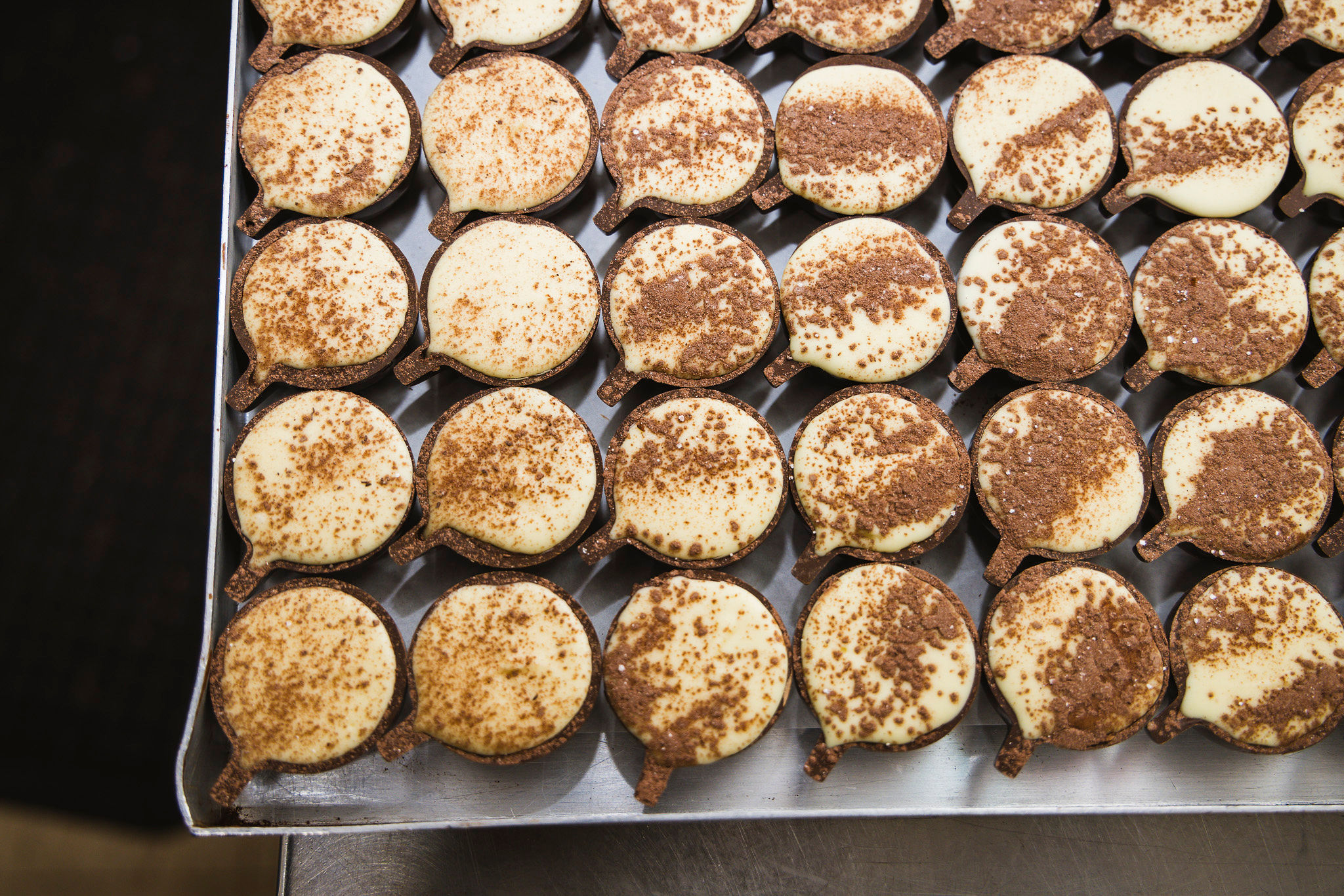
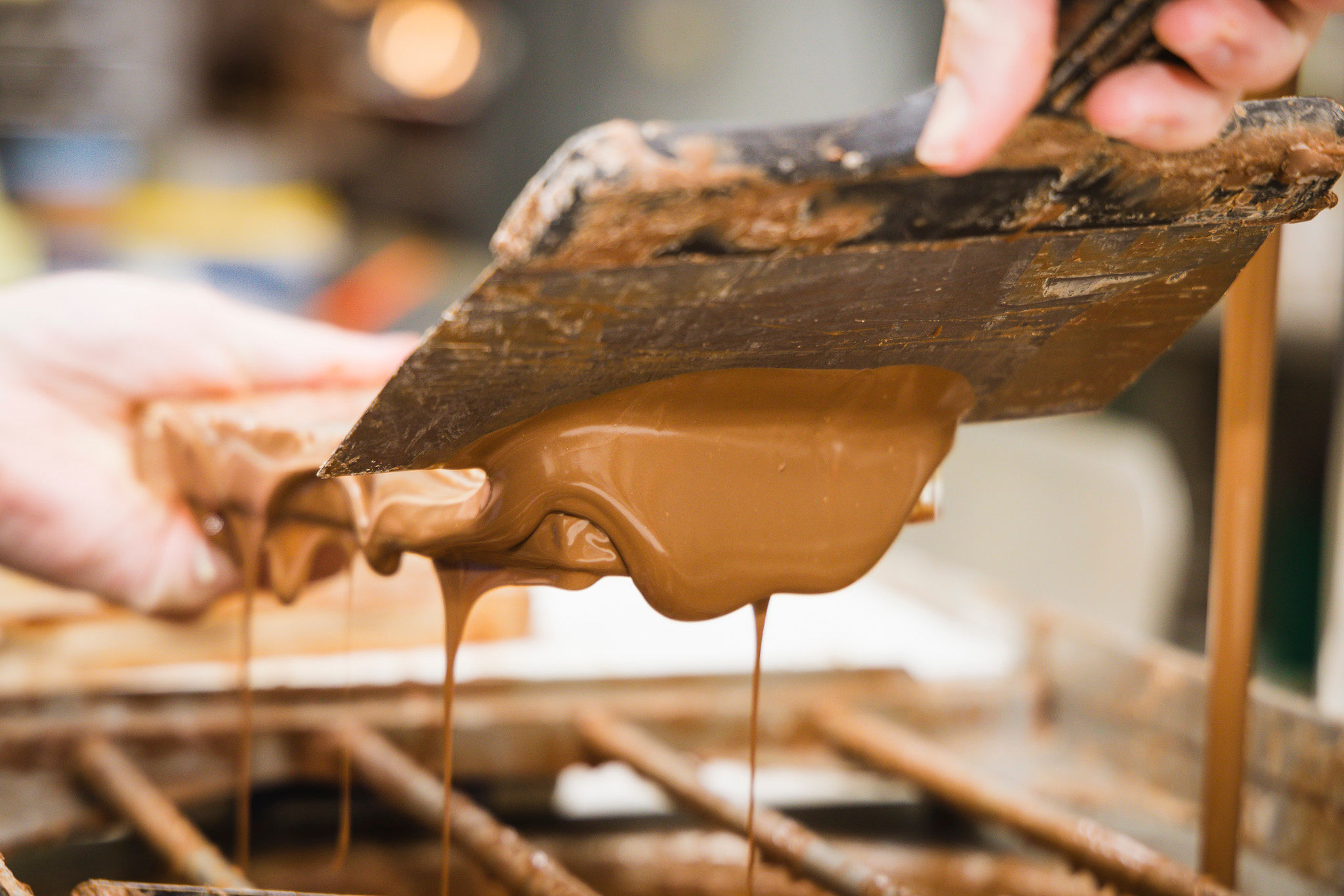

My parents moved from The Netherlands to Melbourne in 1960.
Skilled workers were enticed to Australia in the 1960’s with funding to help set up a new life and home. My father, being a pâtissièr, saw a great opportunity in this and convinced my mother to travel to the other side of the world to start their married life. She already had one brother who had made the move too.
Mum didn’t like Australia to start with. She didn’t speak English fluently and had come from a family of 19 children. For her, it was pretty lonely. She had given it a go, and Dad had always promised if it didn’t work, they could go home. So, they went back to Holland, but this time, Dad couldn’t settle so, after a lot of convincing, he got Mum to give it another go in Australia.
They worked a few different jobs before starting their own business in the Beaumaris Concourse, which is where I was born. We had the Patisserie shop downstairs and lived upstairs. I’d grown up with the routine of business life.
After the business in Beaumaris, my parents opened Keith’s Cakes in Church Street, Brighton.
Dad is the original Keith.
My older sister Jacqui and Mum worked in the shop, and Dad worked on the production side. That business grew well with lots of staff.
He sold that business around 1982 when I was about 13. He’d decided to take a short break after a successful business and then start again, this time opening a handmade chocolate shop. A pretty gutsy move when there wasn’t much like it around. In his year off, he went to Holland to see family and buy the equipment he’d need, as well as the chocolate moulds. He returned and opened Lizzy’s Chocolate Creations in 1983.
He was making Belgian style chocolates with traditional recipes from his youth as an apprentice pâtissier in Holland and was working in a shop-front that was quite small – it has a very European feel which customers love.
In the early days, our main customers were people who had experienced handmade chocolates in Europe and appreciated the style, as well as other immigrants like Mum and Dad who wanted a taste of home.
A major challenge for my parents was to educate the Australian public on the worth of fine, handmade chocolate.
Some customers would say, “But I can get a bar of chocolate in the supermarket for half the price.”
My mum was Elizabeth, hence the name Lizzy’s.
They weren’t very inventive with their business names. Keith’s cakes and now Lizzy’s Chocolates. When they started, Dad was making everything out the back, and Mum was focusing on the retail side of the shop. After a while, they employed an old apprentice that Dad had trained from Keith’s Cakes.
Being a small business, it was like a family and Dad always treasured good workers.
A few flavours have gone, but much of our original range is still around. They’re traditional for a reason, tried and true flavours, and now Australians have developed a taste for European flavours like marzipan and liquors.
We’ve always made our own praline, ganache and caramel from scratch, and we’ve developed new flavours along the way but – for the most part – if you came in 40 years ago, the shop would feel the same.
The smell of production out the back is always a great advertisement.
Mum and Dad had three girls, and we had all worked in the shop at certain stages.
My middle sister and I were the Saturday morning crew, so Mum could take the weekend off. I remember sitting at the back of the shop thinking, “I need to get this packed or I’ll have to stay till it’s finished.” You sort of fell into doing what you had to do for the family.
As a kid, I didn’t really learn how to make chocolate. Dad would say, “Can you just sprinkle on this decoration while I roll the truffles?” but that was the extent of it. After finishing school, I never thought I’d end up in the chocolate world. I was more interested in fashion. I was a seamstress for a while and a pattern maker, but soon realised it wasn’t the industry for me. I always intended to go back to Uni but, once I was earning money, it was hard to give it up to study again.
During a period when I was sort of drifting and working out what I wanted to do, Dad said he was thinking about selling the business. He didn’t expect any of us to take it on, and he was fine with that – but I remember thinking, “This is a good little business to buy. Maybe having my own business is what I need.”
I vividly remember Mum saying,” NO! Don’t work with your father.”
We promised her we would have a trial period to see if it would work. Dad said, “I won’t hold you to it. Come in, I’ll train you. If you like it, I’ll send you to Europe to do a course. No obligation.”
“If you don’t feel like you want to do it, you don’t have to.”
It was a pretty good deal.
I went to Germany in 1989 to train as a Chocolatier.
I could have gone to Switzerland, which was a more practical course, or Germany, which was more theoretical. Dad was able to show me the fundamentals, which allowed me to choose the latter.
In doing that, I learned how to make chocolate from scratch – from roasting the cocoa beans, to manufacturing the product. I worked with my father for at least 10 years and convinced him to hire my fiancé, Tim, to work in sales. If I were to take over the business, it would need to be a family business again.
In that time when I worked with Dad, we lost my beautiful mother to cancer. We would often get customers asking who Lizzy is, so I’d say, “I’m Lizzy junior.” It was a traumatic time but you get through these things with the support of the ones you love.
Tim now helps with the production side, like making our caramel, hazelnut nougat and roasting all the nuts. Although he’s not a chocolatier, he sort of is.
Coming back to the business as an adult felt quite normal. Dad was very good at explaining, and he held the same theory in training people that I’ve always had; you need to feel it to understand it.
He was also good at saying, “Make the mistake, ask me why and you won’t do it again.”
“You’ll learn why not to do it.”
That’s been my ethos too.
It’s a bit of an awakening to think that I’ve had the business for longer than Mum and Dad.
I look at how far we’ve come.
Things have changed a lot in 40 years, and Carnegie is a very different shopping strip compared to when we first opened.
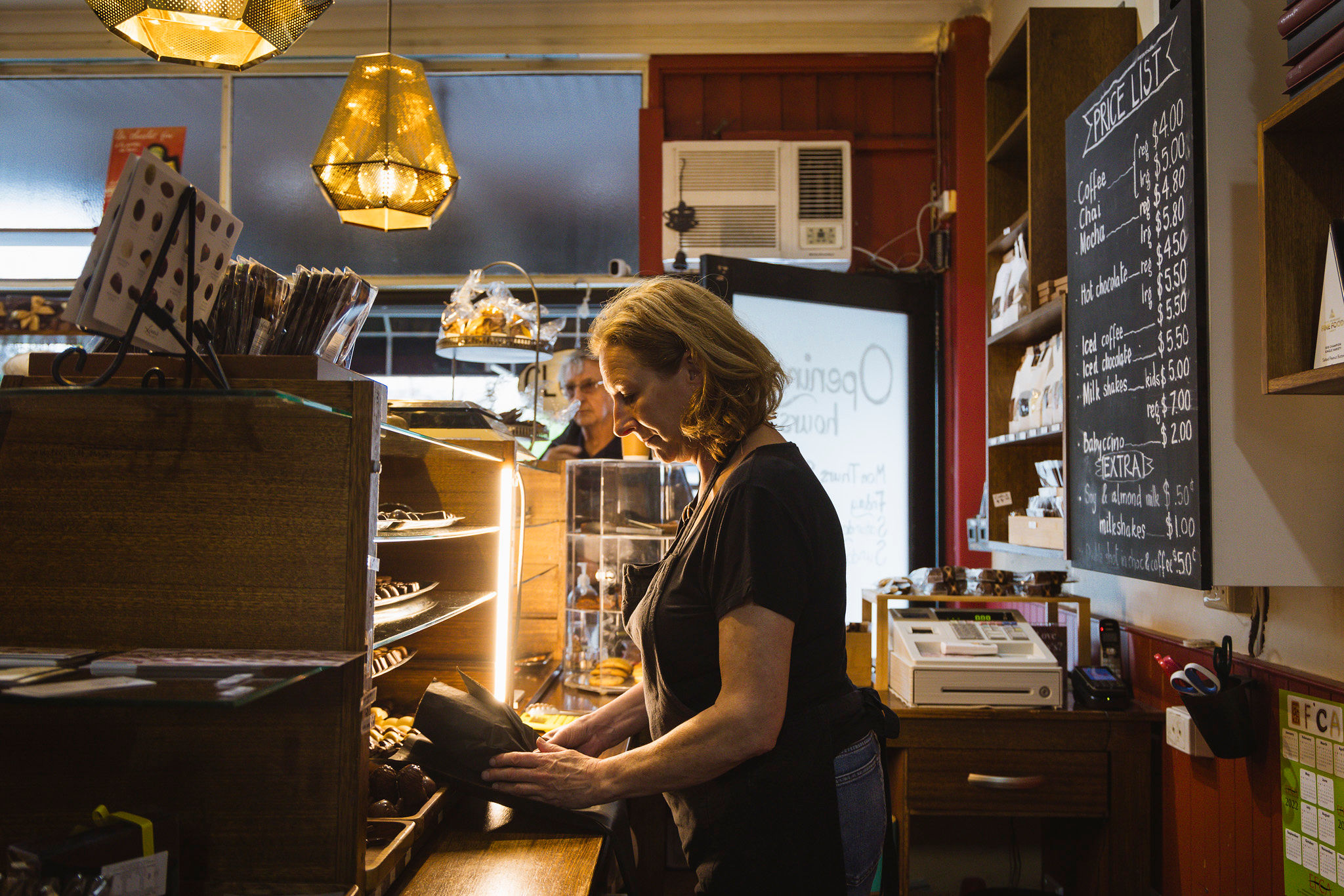

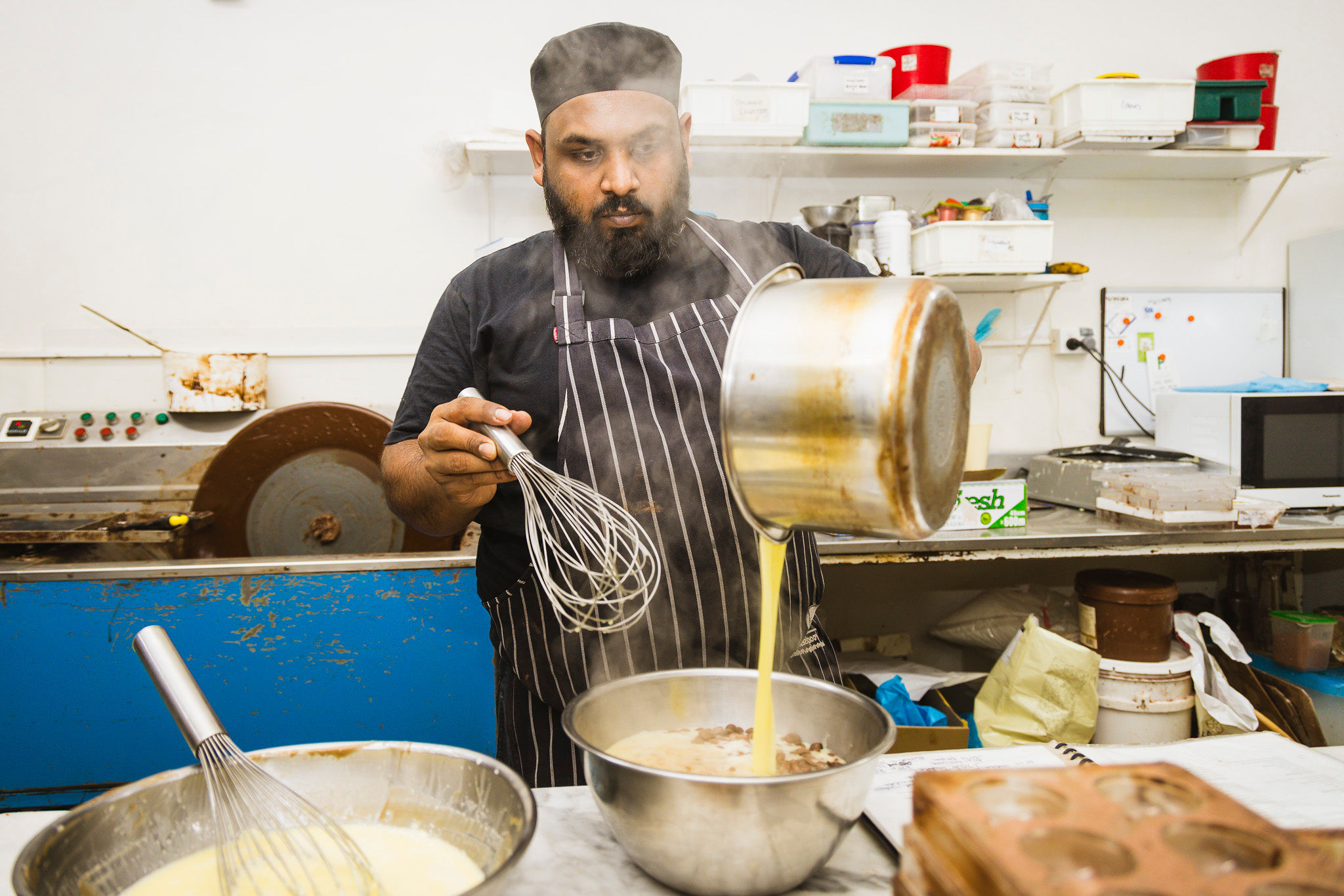
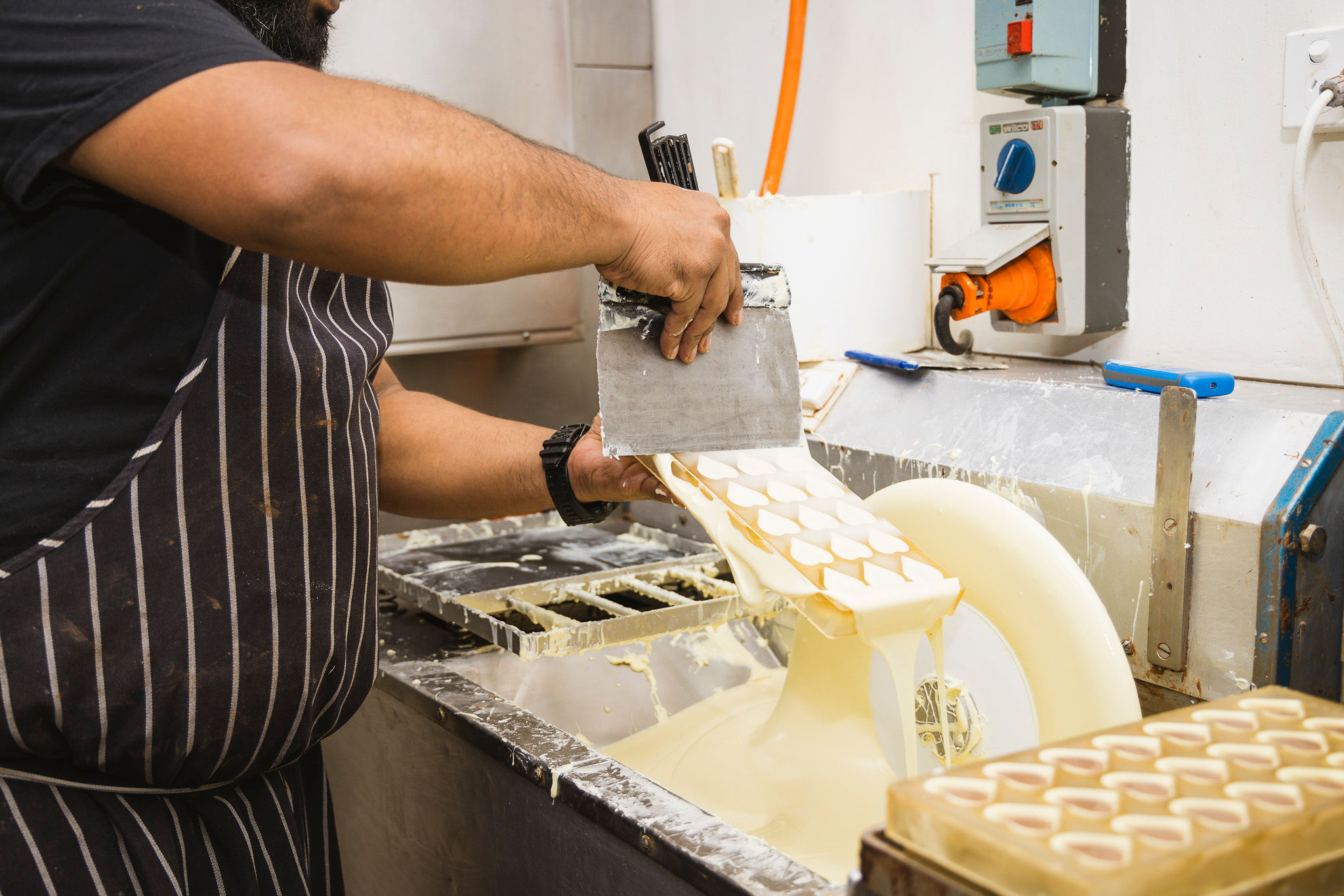

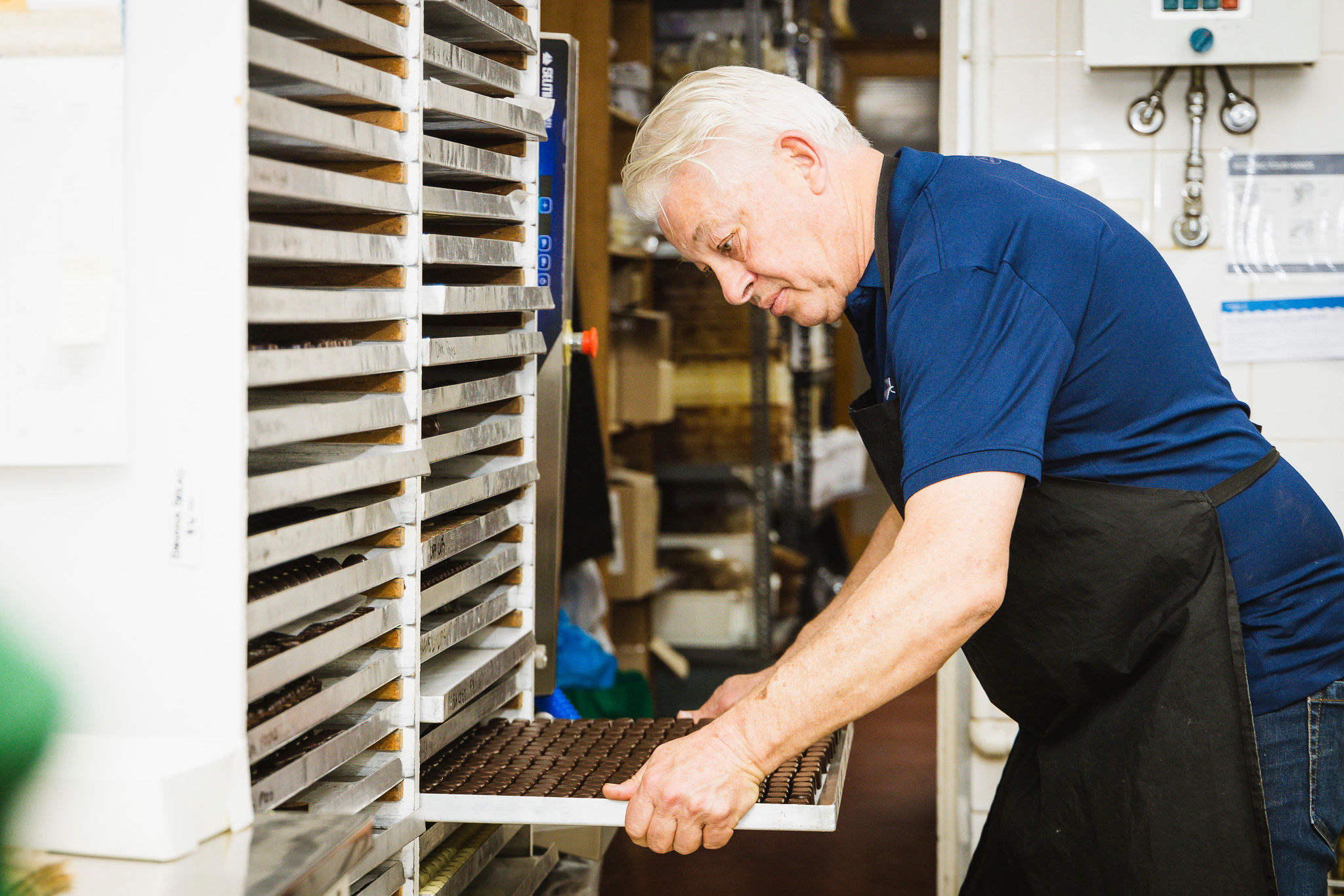
We’ve also started getting into chocolate classes recently. I don’t want to have a class of ten people where they don’t get to experience the feel of working with chocolate, so we cap it at five people. It means everyone can have a go at tempering. That’s part of the joy of running a chocolate class. We do the tempering, get messy, and have a safe environment where we can make mistakes.
I really enjoy it.
Although we could’ve grown this business into a bit of a brand, it’s always been about a lifestyle choice.
And our customers really know us here.
When I do my chocolate class, I try to explain what sets our products apart.
Part of it is the chocolate we use – premium European brands.
At its core, chocolate is pretty basic – it’s cocoa liquor, cocoa butter and sugar with a soya lecithin to emulsify it. Milk chocolate has whole milk powders added to it. It’s manufactured with high quality beans, and a lot more time is taken to refine it and make it smooth. Cheaper brands use vegetable fats which can leave a waxy film in the mouth, but makes it easier to work with.
There’s also our 40 years of experience. I think chocolate is the fussiest ingredient because it’s affected by many different elements. For instance, if the weather is humid or hot, it can affect the way the chocolate sets. Chocolate is made to have less than three per cent moisture, that’s why it’s so stable. When moulding chocolate, you need to be careful with water near the machine.
If added to the chocolate, it can make it seize and thicken, making it difficult to work with.
It’s learning about what’s happening and how to treat it.
That can only come from experience.
Taking over the business was a smooth transition as our customers were already use to having us around.
Tim is very personable, and really good at remembering faces and names, which helps a lot. Many customers have a chat when in store, and they become like friends. This was especially noticeable during COVID-19 restrictions over the last few years. We also noticed that customers – who hadn’t been here for a long time – would order online from us if they weren’t in the area.
We would drive across Melbourne, and they’d come in and say, “Oh my god, I can’t believe you guys are still here,” “I used to come here with my mum when I was little,” and “I’m so glad you’re essential.”
Now they come in with their own children.
Once you have a customer that knows you – and they like buying your products – they tend to stick with you.
I’m still making chocolate out the back.
I’ve always been in production but I’ve recently got an apprentice. For a long time, it was just me and another chocolatier. Now I have the two in production, and I can jump in during Christmas and Easter when it’s really busy. I can step back a bit and focus on running the business.
When you’re busy manufacturing, you get caught up in the day-to-day routine, and you don’t focus on important things like marketing. There are so many different hats to wear as a business owner, and we have to keep up with what’s happening within the chocolate world. For instance, chili chocolates were the new, big thing 10 years ago. We did it, now we can’t delete it from our line because people love it
Salted caramel has been big over the last few years and vegan chocolates are very popular too. There’s a lot of allergy issues, so we have gluten free and dairy free chocolates, as well as vegan truffles.
We thought, “Why can’t we make a dairy free truffle which will also be vegan?”
Dad started the business with about 20 flavours, and now we have over 40.
You can’t really stop experimenting and working with new flavours and ingredients.
It’s good to have artisanal businesses in the area that are different, and I think the community values that.
Carnegie has become such a food hub.
The shift toward strip shopping has become better over the last few years. A lot of people are avoiding the big shopping centers, but, prior to that, when people were so time-poor, it was really hard to get them to come to the strip shops. Now people are making the effort. They’ll come to us, then to their favourite butcher, then to the fruit shop. I think we’re going back to some kind of tradition in that respect.
For us, we think it’s important to support the local community, because they support us. My son went to Carnegie Primary and I really like the teachers and principal there. We’ve always donated a huge 4 kilo Easter egg that they raffle off every Easter. We also get a lot of primary school and kinder kids who come in with their parents, so we help with community fundraisers.
We try to support different initiatives, which is great advertising for us, but also supports our community too.
We believe everyone has a role to play to keep our neighbourhood strong.
I still enjoy eating chocolate.
I go through stages.
I won’t be eating them, then all of a sudden, I get the taste for it again.
I took some chocolate brownies to my sister the other day. If I ate it at work, I wouldn’t have enjoyed it half as much. But over there, with a cup of tea while sitting down and talking, it was really good. So much of it is about the environment and the company.
At the start of COVID-19, my daughter convinced me to do UberEats. I thought, “Who would want to UberEats chocolate?” but she said, “You can do drinks and packs.” She labelled them different names; for example, when she was in high school, she ate nougatines while she studied. That became, “The study-saviour.”
It became our best pack on UberEats.
I suppose chocolate taste and smell can evoke emotional responses of memories associated with it.
For her, nougatines were a study thing, and I think that resonated with a wider audience.
We’ve always talked about expanding the business.
The next stage for us and our lifestyle might involve moving to the country, opening a shop and setting up classes there. But I’d still like to keep the style of business that we have. People really enjoy the quaint, comfortable and old fashion type of business. They enjoy the family element, the history, and the environment where you can get to know everyone.
I still enjoy coming into work, as well as the manufacturing process. More so when I’m not doing it all the time. As soon as it becomes, “I need a few thousand of this,” the joy can be sucked out of it. Because I get a bit of a break during the quieter periods – when I jump in – it can be invigorating because I love the process. Every so often, you have a really well tempered chocolate. You’ll take it out and go, “Phwoah, look at that!”
When you’ve done it perfectly, you still get that enjoyment out of it. But, beyond that, I think I’ve lasted so long because we’ve worked on creating an environment that I can enjoy. I like working with our staff and customers – and have tried to create a family atmosphere.
When you go to work for a long time, you need to enjoy what you’re doing, and the environment you are in.

